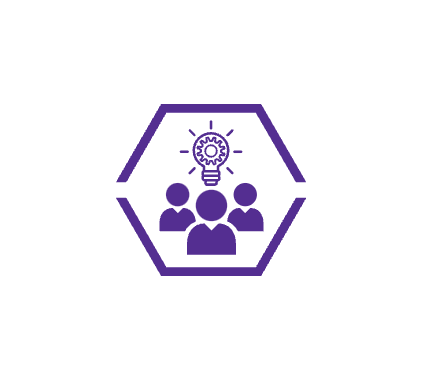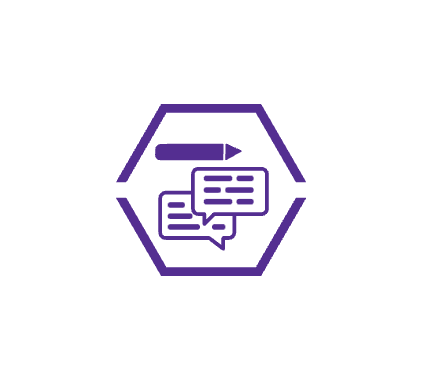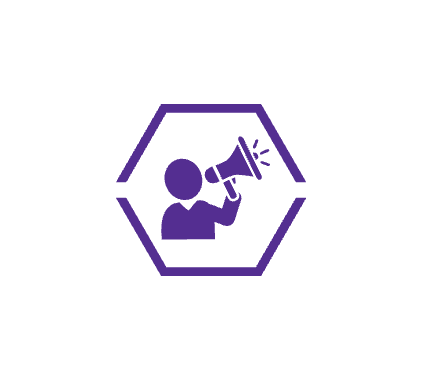The Beginner’s Guide to Lead Generation

Most organizations are no strangers to content marketing and have allocated time and resources to building out quality content for marketing campaigns (if you haven’t, you probably should). But when it comes to determining the effectiveness of different content assets and leveraging that content strategically, many organizations might be falling short — or simply not know where to begin.
Lead generation—or the process of attracting and converting target audiences that have shown interest in your product or service—is the main way to exploit content to its full potential and acquire new customers. For many companies, finding ways to attract customers on an often-limited marketing budget is challenging. By establishing a clear, relevant lead generation strategy, organizations can seek and attract new audiences in a targeted way and generate relevant interest in their products and services to push new deals through the pipe.
What is a Lead?
Before approaching lead generation, it’s important that sales and marketing teams are aligned on what constitutes a “lead.” A lead is a user who has expressed interest in your company’s product or services, typically by interacting in a specific way with your website or providing their contact details in exchange for information about your product or a piece of thought leadership content.
It’s worth noting that each individual company, marketer, or salesperson may have their own definition of what qualifies as a lead or what makes one lead “warmer” than another. Therefore, establishing a clear lead generation strategy and clearly defining these criteria before launching inbound or outbound marketing campaigns is critical to ensuring all teams are aligned and the best possible contacts are being pushed through to sales.
What is Lead Generation?
According to Marketo, lead generation is “the process of getting people interested in your business and gradually moving them through a pipeline to become paying customers”. Lead generation aims to attract desired users—by way of inbound or outbound marketing tactics—and convince them to provide their contact details or convert. Once those details are obtained by marketing, the contact will be qualified based on a set of defined criteria to determine whether the contact is a true lead and should be contacted by the sales team or harvested for marketing nurture.
Content is one of the leading tools B2B organizations use to generate leads — whether blogs, social media posts, eBooks, infographics, or webinars. Longer form content such as eBooks, webinars, or demo videos may require users to fill out a form in order to access the information in exchange for their contact details. Understanding this process and the mechanisms used to promote the content to the appropriate audience requires careful planning and general knowledge of building and executing a digital marketing campaign.
Why Do You Need Lead Generation?
Put simply, leads generate business. And most frequently, marketing generates these leads — they don’t just magically appear. While opportunities may be everywhere, capturing those opportunities requires a true lead generation strategy to trigger connections with a target audience that may otherwise not know your company even exists.
Lead generation helps develop a pool of relevant contacts for sales teams to work in an effort to close business. Without those leads, it can be challenging to maximize growth and revenue, especially for smaller businesses that are still establishing a presence in the market or industry.
A carefully concocted lead generation strategy helps build visibility, credibility, trust, and interest from a specific group of people, which can ultimately help drive traffic from high-quality prospects. When executed successfully, high-quality prospects can become high-value customers down the line — which means more revenue for your business.
Closing deals doesn’t happen overnight, especially in the information management and technology space. Few people might be ready to buy your products or services right now. Still, by optimizing the process of capturing contacts and then nurturing them accordingly, those users will develop a relationship with and trust in your teams and services, making you top of mind when the time comes to buy.
Key Benefits of Lead Gen
Ok, so your companies need leads to sustain the business. But how exactly does lead generation contribute to growing your company towards a desired outcome? Below are the five main reasons your company will want to invest in lead generation today.
Build Awareness
The more users are aware of your brand, the more potential customers you’ll have. Brand awareness is a measure of how many people within your target market actually know your brand. This awareness is where it all begins and will help drive engagement which can lead to establishing a relationship with that person or company.
Lead generation campaigns—including outbound emailing, search engine marketing (SEM) techniques, social media promotion, and content creation help educate and inform users within your target market regarding your product and services. By spreading that initial awareness, businesses will be more likely to consider your product when the time comes to make a purchase.
Grow Your Following
Content creation is the backbone of all lead-generation campaigns. By building relevant, high-quality content for your website, and then promoting it via various marketing channels, you will be able to position your business as a thought leader in the industry and ultimately start conversations—be it by email, social media, or other channels.
With enough time and consistency, these efforts will establish a community of brands and businesses—be they customers, prospects, or like-minded industry thought leaders—who follow your content and look to you for valuable industry or product information. After a bit of elbow grease and valuable content creation, some of these users may become loyal customers or even advocates for your brand.
Generate Opportunities
Within every follower lies a potential opportunity. Beyond simply capturing prospects or potential customers, lead generation can also surface new business opportunities that you may not have found otherwise, including new partnerships or complementary services for joint campaigns.
By establishing connections with non-competing brands, you may find opportunities to host joint webinars, create joint content, or conduct cross-communications, which lets you benefit from that company’s audience and vice versa.
New partnerships can provide access to new target audiences, which means more leads!
Improve Lead Quality
One of the key benefits of lead generation is that it allows you to target specific consumers within a specific audience, so you can reach only those who are relevant to your offering. No matter how much traffic your website might generate, unless those users are potential customers, you won’t reap the benefits of those views.
By creating relevant content and promoting that content in a targeted way to a pre-defined audience, you can more easily capture leads that are relevant to your business. Once the right contacts are in the pipe, you’ll be able to nurture them with various marketing techniques to push them through the funnel and convert them into marketing-qualified leads (MQLs).
Boost Revenue
MQLs have the potential to become sales-qualified leads or SQLs. According to Gartner, an SQL is “a prospective customer who has moved through the sales pipeline – from marketing-qualified lead through sales-accepted lead – to a position where the sales team can now work on converting them into an active customer.”
Using various marketing nurture techniques and careful alignment between marketing and sales teams to understand where each lead lies in the buyer’s journey, leads generated by marketing can become viable opportunities for new sales, which means new deals.
When done correctly, with the right messaging and content, lead generation can maximize your company’s ability to reach qualified, target prospects making it easier for sales to convert them into business.
Getting Started with Lead Gen
Understanding these concepts is just the tip of the iceberg. Lead generation is an ongoing effort that demands careful planning and constant adjustment, which requires dedicated teams and resources. What works for one campaign or on one particular market might not work for the next, so it’s crucial to remain attuned to evolving trends and customer demands.
Building out rockstar content is a great start. Still, it’s only half of the job—developing a clear, actionable lead generation strategy comprised of individual campaigns is critical to making sure users are seeing your content in the first place and that it’s falling under the right eyes. Investing in the right marketing team or partner service can help ensure your content is milked to its full potential.
Whether you’ve already built out a plan of action and need help with execution, or if you need assistance developing an effective lead generation strategy, Instinctive Solutions can help.

 Content Marketing
Content Marketing Messaging and Positioning Accelerator
Messaging and Positioning Accelerator Guest Expert Speaker
Guest Expert Speaker Reviews and Testimonials
Reviews and Testimonials Success Stories
Success Stories News, Awards & Recognition
News, Awards & Recognition Blog
Blog Podcast
Podcast